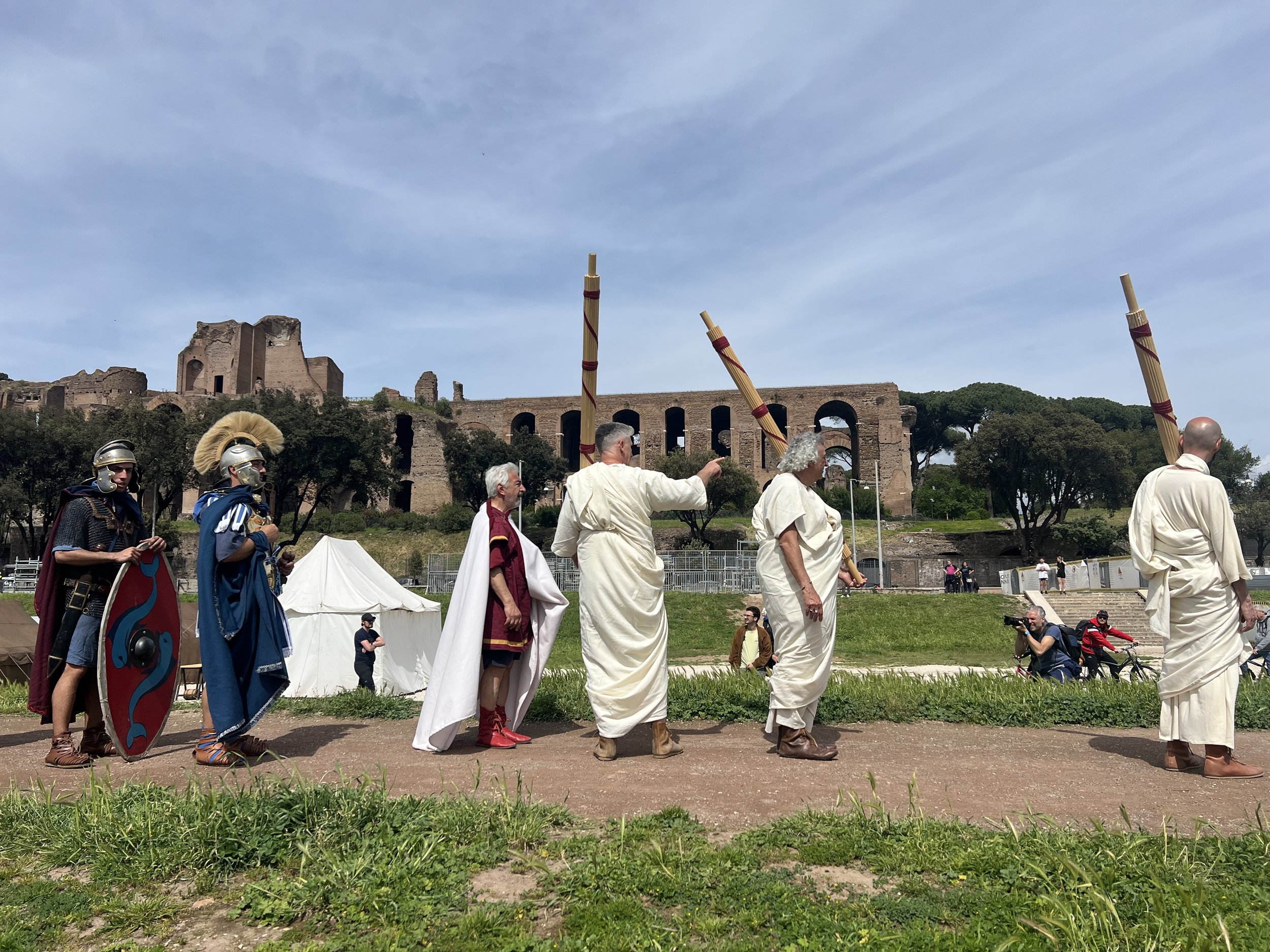Happy Birthday, Roma!
Today, April 21st, Rome awakens to the echoes of its ancient past. It’s a city built upon layers of stories, legends, and a history so vivid you can almost feel it beneath your feet as you stroll its cobblestone streets. Today, Rome celebrates another remarkable milestone—its 2,778th birthday. But what exactly does this date commemorate, and how does a city with such an extraordinary heritage celebrate its own birth? Join me in exploring the rich history behind Rome’s special day and experiencing the vibrant events that bring its storied past alive.
The Legendary Origins of Rome
Rome’s legendary origins date back to the iconic twins Romulus and Remus, famously abandoned and raised by a she-wolf near the banks of the Tiber River. Discovered by a shepherd named Faustulus, these brothers grew to adulthood, filled with ambition and rivalry. In 753 BC, Romulus founded the city atop Palatine Hill, marking April 21st as Rome’s official birthday.
Historical records mingle with this mythology, grounding legend in reality through archaeological discoveries around Palatine Hill that predate even the twins. Early settlements gradually united into a city-state, laying the foundation for what would soon become the heart of one of history’s most influential empires.
Rome’s initial governance under seven legendary kings eventually transitioned into a republic in 509 BC, introducing a structure that significantly influenced governance worldwide. This republican era birthed democratic principles, a structured senate, and citizenship rights, laying the groundwork for modern society.
Under Emperor Augustus Caesar, Rome entered a golden era known as the Pax Romana, spanning two centuries of peace and prosperity. Architectural marvels such as aqueducts, roads, and the Roman Forum flourished, many of which continue to captivate visitors today.
Thus, April 21st symbolizes more than Rome’s mythical founding; it celebrates the birth of a civilization whose contributions in law, architecture, culture, and governance continue to shape the world.
Vibrant Celebrations and Living Traditions
Each year, Romans honor their city's birthday through vibrant events and historical reenactments. Circus Maximus and the Roman Forum come alive with enthusiasts dressed as gladiators, senators, and vestal virgins, reviving ancient rituals and ceremonies. The pageantry includes symbolic lighting of sacred fires and speeches delivered in classical Latin.
One of the highlights is the reenactment of Harpastum, an ancient Roman ball game reminiscent of rugby. This year, I watched my son Isaac immerse himself in a kids' Harpastum game at the majestic Baths of Caracalla. Witnessing Isaac engage with history firsthand brought a deep sense of joy and connectivity, bridging past and present.
In addition to reenactments, celebrations include cultural exhibitions and concerts near iconic monuments such as the Colosseum and Palatine Hill, blending historic charm with contemporary artistry. On Rome’s birthday, museums and archaeological sites like the Capitoline Museums and Pantheon offer free entry, inviting thousands to explore the city's vast heritage.
The city itself participates by adorning monuments with flowers and festive lights. Official ceremonies occur at Piazza del Campidoglio, designed by Michelangelo, featuring speeches honoring Rome’s historical significance.
For a quieter yet poignant experience, the sunrise ceremony atop Aventine Hill allows residents and visitors alike to watch dawn break over Rome, symbolizing renewal and continuity.
Food also plays a central role in the festivities, with markets bustling with Roman delicacies such as fresh porchetta, pecorino cheese, and sweet maritozzi pastries. Families enjoy leisurely picnics in parks, savoring local wines and traditional dishes, embodying Italy’s philosophy of savoring life's simple pleasures.
Children’s activities ensure younger generations actively participate, including historical games and educational workshops. Isaac’s involvement at Caracalla was not only playful but also a meaningful connection to his heritage, underscoring that traditions remain vibrant when shared across generations.
Engaging with Rome’s Rich Cultural Heritage
As the festivities unfold throughout the city, Rome becomes an open-air museum, showcasing exhibitions and activities designed to engage both locals and visitors. Artisans demonstrate traditional crafts, such as pottery and mosaic-making, highlighting the meticulous skills handed down through centuries.
The theatrical performances staged amidst ancient ruins are particularly moving, bringing historical dramas and comedic plays back to life. Watching actors perform within the Theatre of Marcellus or among the remnants of the Forum sparks imagination and transports audiences back to Rome's glorious past.

